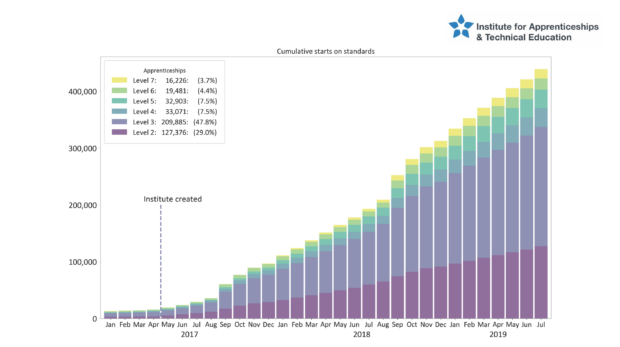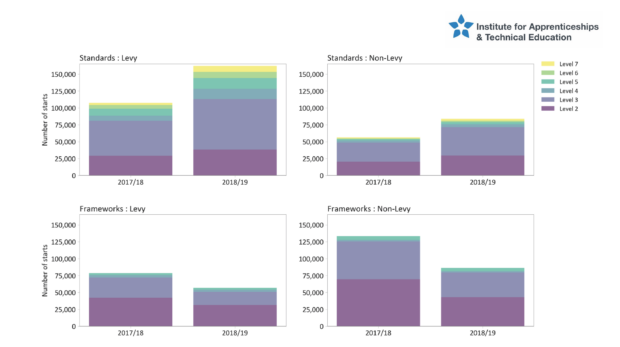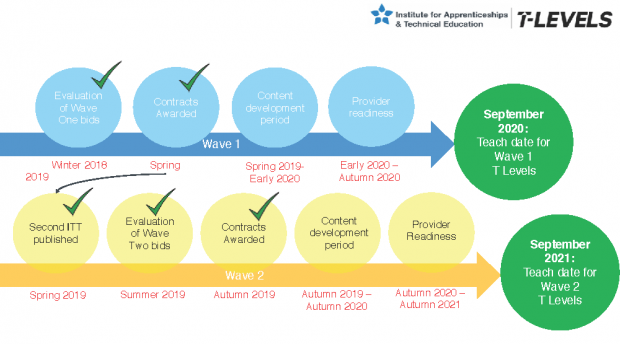In the 30 months or so that the Institute has been in existence, we have made significant progress in delivering the Government’s technical education reforms.
Focusing on apprenticeships first, more than 500 ‘standards’ (new apprenticeships replacing the old frameworks) are now available for use by employers and people of all ages who want to earn a living while they receive high quality training.

The approved standards can all be viewed on our website. Well over 300 of them have been approved by the Institute’s processes since we launched in April 2017, which have been developed by Trailblazer employer groups representing around 5,000 employers overseen by our expert route panels and our employer-led Board.
As more standards have become available, this has resulted in the number of people starting on an apprenticeship being spread across a much wider range of available apprenticeships, including those at higher levels.

In terms of overall impact, I’m pleased to note that there have been more than 440,000 starts on standards at around 100,000 employers, being delivered by more than 1,400 training providers.
These starts are spread across a much wider range of occupations and different learning levels than before which is good news because it means the apprenticeships programme better reflects the variety of occupations and training levels across the economy – from entry up to senior management level.
The old apprenticeship frameworks were criticised by employers for being overly focused on lower level training. I am proud that the Institute has played a leading role in redressing this by making available a much broader range of standards.
More than 70% of all starts on standards have been at Level 3 or higher. Despite a lot of noise on this subject from some quarters, 28% of starts have been at Level 2 and only 3.7% of starts are at Level 7. Growth in starts at Levels 6 and 7 have been proportionate with other levels, with the biggest increase in starts seen at Level 3.

Starts with apprenticeship levy payers have now recovered to 2016 levels. Numbers on standards with smaller employers who do not pay the levy have also increased, although we know that some still struggle to get access to funding to pay for off the job training, which is being addressed by the Government. The fall away in overall starts on apprenticeships that was much talked about has all been on the old apprenticeship frameworks. Shifting starts away from framework apprenticeships and onto standards was a key element of the apprenticeship reforms.

Moving onto T Levels – and although the timetable for their rollout is tight – we have hit every deadline so far and I am confident they will be ready for delivery in line with the dates announced by Ministers.
The contracts to develop, deliver and award the first wave of T Levels were awarded at the beginning of this year and are being developed for delivery to learners from September next year.
Wave 2 (delivery from September 2021) contracts were awarded on time on the 1st of October.
The content development for Wave 3 is also running to schedule for delivery from 2022.

Overall, I am very proud of the achievements of the Institute in our first 30 months. We are on the right path and I’m confident that we’ll see continued progress to deliver the aims of the technical education programme looking ahead.
Leave a comment